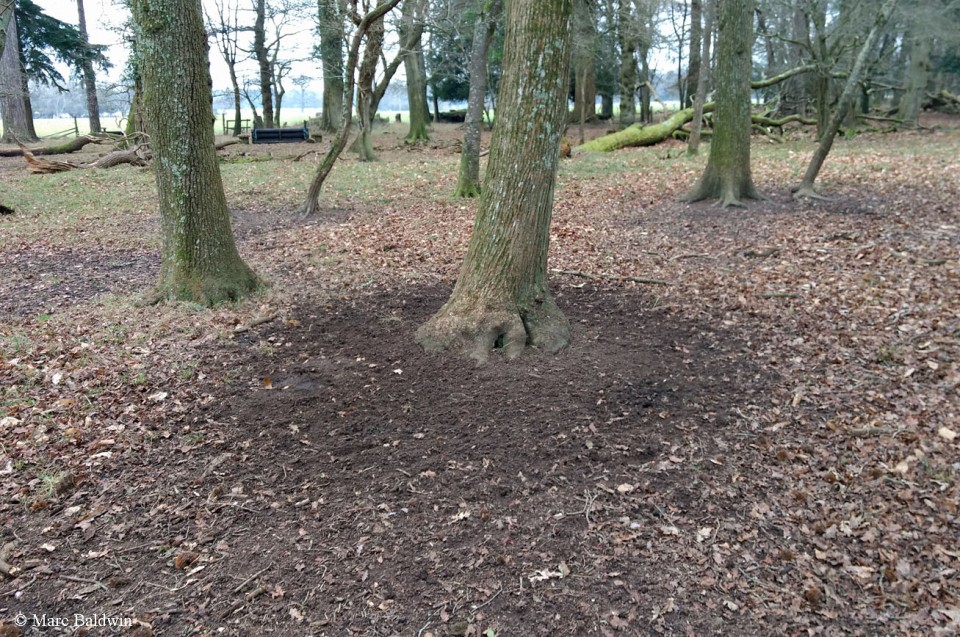Deer (Overview) Behaviour & Sociality
In his Deer of the World, Valerius Geist notes that, during their radiation from tropical to colder climates, deer evolved from solitary saltatorial animals (‘hiders’) to gregarious cursorial ones (‘runners’) with complex antlers and striking changes to their tail and rump. Indeed, most species of deer in Britain form either social or family groups and, in some cases, the group may be both social and familial.
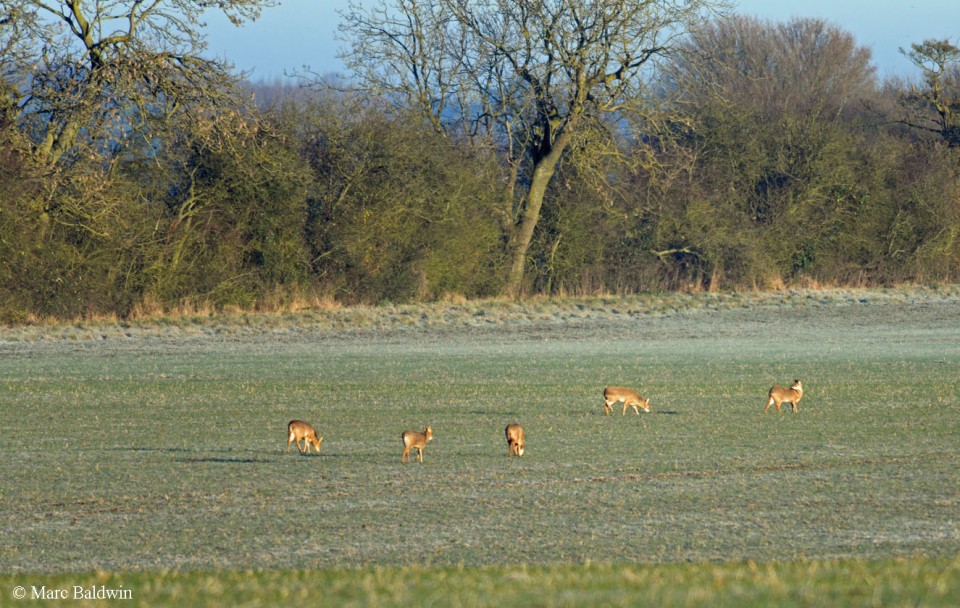
Roe deer typically form small family groups (male, female and young) and males establish territories during the rut; larger, but unstable, groups may be formed during winter. Chinese water deer are predominantly solitary out of the breeding season, although a female will often be seen travelling and feeding with fawns of the year during the summer. Like Roe, water deer will often form loose aggregations to feed during the winter, but will scatter when disturbed. Muntjacs may be either solitary or may establish small family groups (male, female and dependent young) and maintain a territory from which interlopers are expelled. Sometimes young muntjac bucks form loose associations with each other, travelling together and grooming each other.
Red deer hinds are found in matriarchal groups throughout the year and stags congregate in loose bachelor groups outside of the breeding season while their antlers are shed and re-grown – Red stags are antisocial towards other males during the rut. Sika hinds form aggregations during the rut, but outside the breeding season they are surprisingly solitary, given the gregarious nature of other Cervus species; they tend to be found either solitarily or accompanied by a single calf. Fallow deer are gregarious, with does forming fairly stable groups of up to five or six, typically related, individuals (these may combine at favourable feeding sites to form herds of up to 200 deer); the sexes are typically separate, although doe herds may contain males of less than two years old. Fallow bucks are less social than does, typically found either solitarily or in small groups.
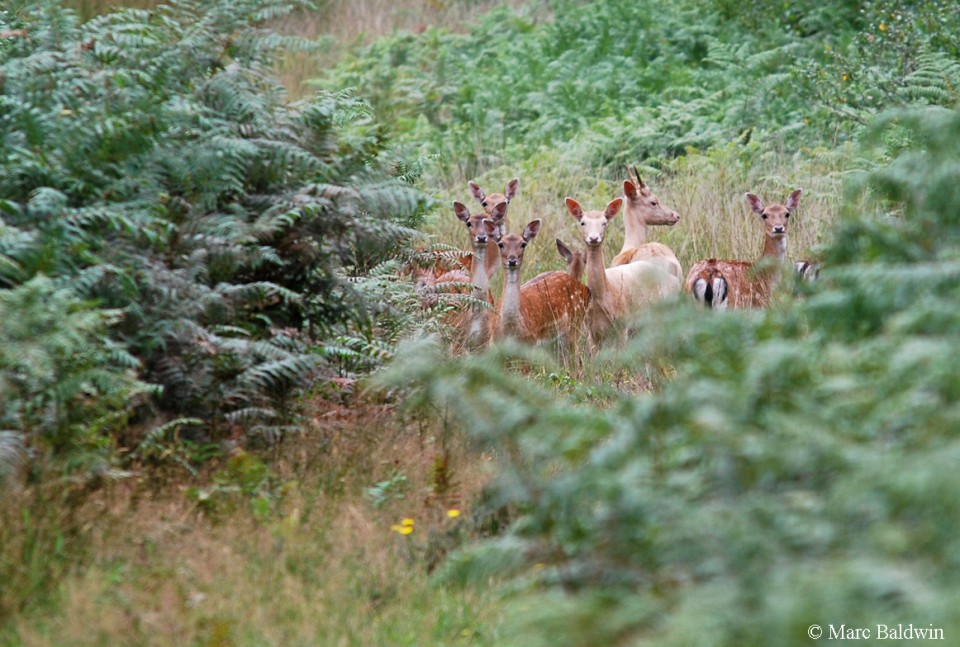
A deer’s world is heavily based around scent – all deer possess scent glands, the products of which are used to mark themselves and objects in their range/territory. Taking the Cervidae as a whole, at least 13 sites containing scent glands have been identified, although most deer have varying combinations of these, which may be active all the time or only during certain seasons. A typical scent gland is composed of a hair follicle into which fatty acid secretions from a sebaceous gland are deposited. Scent glands have been seen to gape during periods of high emotion, such as during the rut, which implies a social context to the scent signals. In his section on deer in the Encyclopedia of Mammals, Geist notes that, generally, small species mark the ground and vegetation with glandular secretions, urine and/or faeces, while larger species mark themselves. More specific details of the scent glands possessed by the different species can be found on their profiles, along with information relating to their use.
In addition to scent, sound is also an important component of a deer’s world. In her 1962 book, The Language of Animals, Millicent Selsam writes of how it is signals of voice and gesture that keep herds of deer coordinated. Selsam points out how the dominant cow in a herd of American elk (Cervus canadensis) can make the whole group change direction with the motion of her head and neck, or flee when she gives a warning bark. Male deer emit various types of roar (depending upon the species) associated with the rutting period; these calls convey a wealth of information about the caller and, in some cases, may serve to spur females into oestrous. There are also various calls used by mothers and their young, from soft bleating or “pheep” utterances to loud distress calls that can bring several mothers (all with young in the area) to investigate.
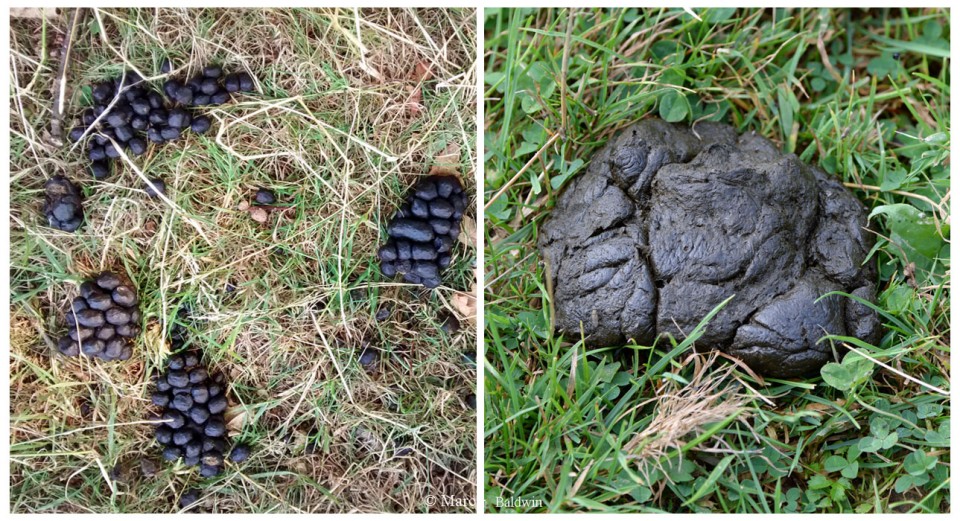
Other behaviours include bark stripping; this tends to be limited to the rut as it’s often associated with cleaning of antlers and marking of territory, although deer do occasionally strip and eat bark. Most of the damage tends to be done in commercial plantations, where deer may eat leading shoots and lateral buds of developing saplings if adequate (often costly) preventative measures aren’t taken. At moderate to high densities, deer (particularly muntjac) can suppress woodland regeneration and strip away ground cover. They may also fray bark and damage saplings while scent-marking during the rut and significant deer populations may be belied by the presence of a “browse line”, where overhanging vegetation is cropped to a uniform height by the deer as they stretch to reach food.
Deer will “pronk” to alert a predator that it has been spotted, and warn other deer of danger; sometimes pronking is used when moving uphill. Pronking is a movement best described as a bounce, with all four feet off the ground at the same time. Deer are creatures of habit and will often create well-worn footpaths between favoured resting and feeding sites.
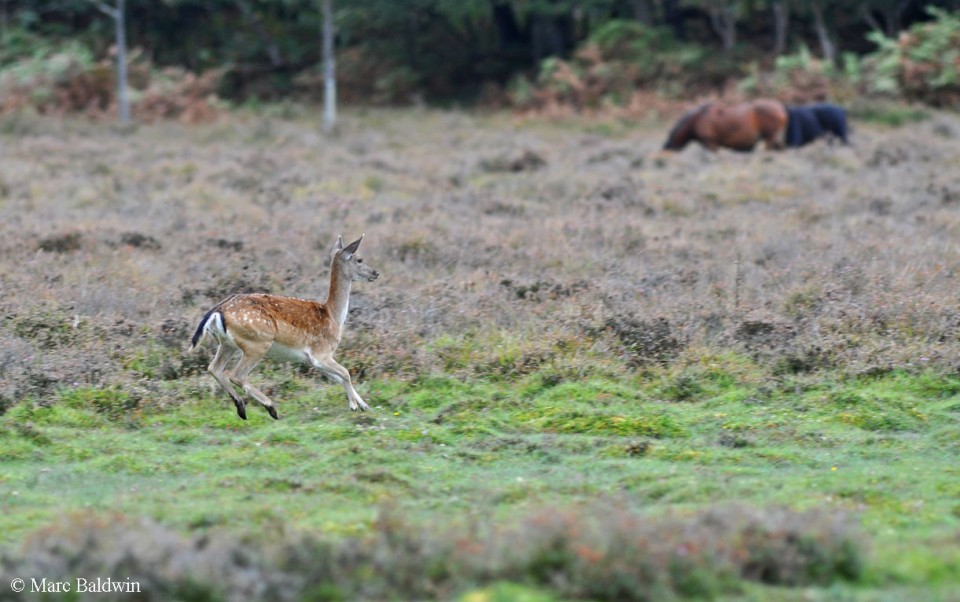
Along these footpaths one can often find their footprints (called slots), which can tell you a little about how fast they went through there. When walking the hind feet “register”, which means that their back feet step into the slots left by the front feet; this doesn’t happen when the deer runs. Along tracks and around feeding and bedding sites it is common to find droppings, which are small black, dark brown or dark green (depending on the diet) cylindrical pellets – they contain undigested plant material, but this is generally not visible without dissection.
During the breeding season, the larger deer species create rutting scrapes, which are shallow depressions in the ground varying from a foot to several metres in diameter. Sometimes a distinct ring of trampled vegetation can be seen around a tree trunk or bush to indicate a Roe mating chase – this is called a roe ring.
